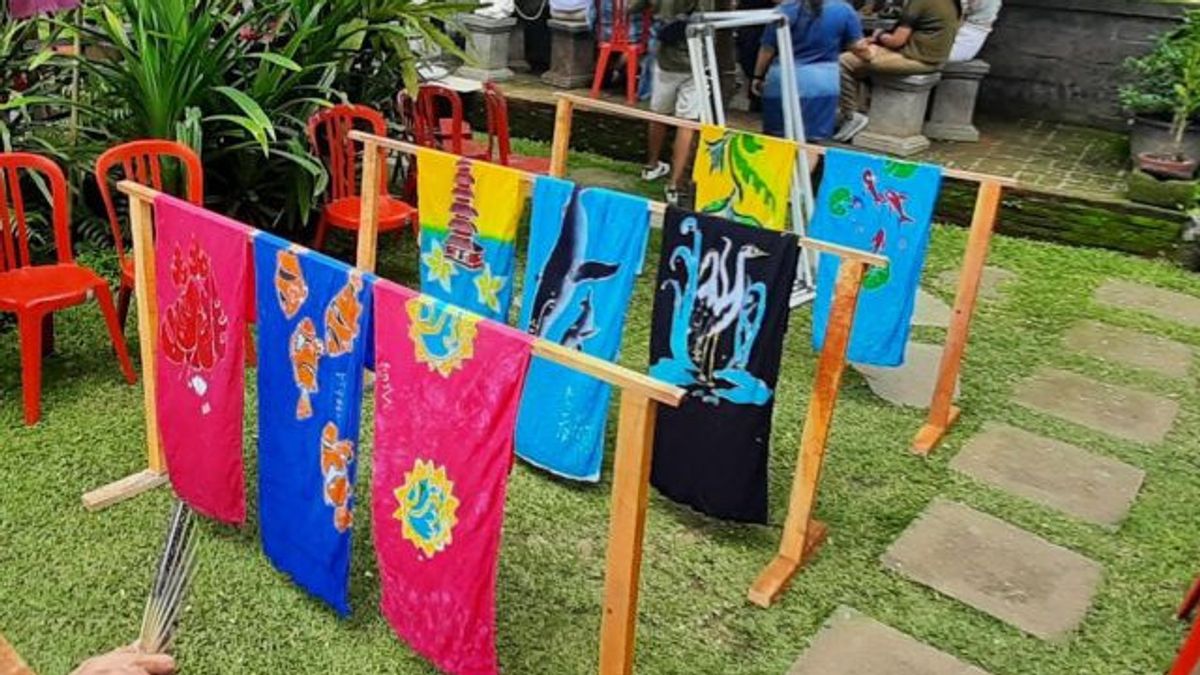JAKARTA - Similar but not the same could possibly be attributed to Balinese Batik, if you compare it with batik from various other regions in Indonesia such as Central Java and others.
In terms of tools and manufacture, batik as taught by batik makers from the Gianyar area, for example, is different from batik in general. Hot wax, canting and coloring are the tools needed to make the work of art.
What makes the difference is that the colors tend to be bright and the motifs drawn on batik are typical of Bali, such as barong, frangipani flowers, tulips and temples.
"We in Bali have a distinctive characteristic, batik paintings with colorful ornaments, not monotonous. In Java it is more brown. Here it is brighter," said batik maker from FIVE ART STUDIO UBUD I Wayan Bagus Pujana in the Keliki area, Tegallalang, Gianyar, quoted from Antara, Sunday 26 November.
The bright colors in question include sky blue, yellow, orange, purple, pink, green. In the future, anyone who wants to make batik will have the freedom to choose colors as they wish because there are no special standards or hands for mixing colors.
"We have provided several samples, there are patterns. We recommend visitors choose the easy one. Usually it takes 2 - 3 hours to complete depending on the design created," said Wayan.
So what is the batik process like?
For those who want to learn how to make batik, Wayan and his team usually provide cloth with typical Balinese patterns measuring 40 cm x 80 cm. Later they will receive a brief education on how to make batik.
A short lesson in making batik begins with melting the wax until it is hot enough, then taking the liquid wax using a canting to taste. The important thing to remember is not to let the container containing the liquid wax touch your hands because it is very hot.
Next, hold the canting at an angle of about 45 degrees so that the wax doesn't drip from the tip of the canting onto the fabric, leaving dots or drip marks.
The next step is to immediately fill the pattern on the fabric with liquid wax and refill the canting when the wax has cooled.
Use all the lines or patterns filled with filled wax, wait a few moments until the wax is dry then color it according to taste.
VOIR éGALEMENT:
"Choose the color you like, color the background first. The goal is to dry quickly. After that, choose the color for the object. Color from chemical dye for fabric. Remasol powder mixed with water. There is no maximum number of colors," said Wayan.
After all parts are colored, the fabric will be dried in the sun or dried. Next, the cloth is dipped into a container containing glue and rinsed using hot and cold water.
The final step is to dry the cloth again until it is completely dry. Visitors can later take home the batik cloth as a memento.
"Want to learn, even though it looks easy, it's not easy. That's what studying doesn't have to be good at. It's not enough for one time (studying)," said Wayan.
The English, Chinese, Japanese, Arabic, and French versions are automatically generated by the AI. So there may still be inaccuracies in translating, please always see Indonesian as our main language. (system supported by DigitalSiber.id)
















